Marian Mazzone
Formal Analysis of Art: Proxy Learning of Visual Concepts from Style Through Language Models
Jan 05, 2022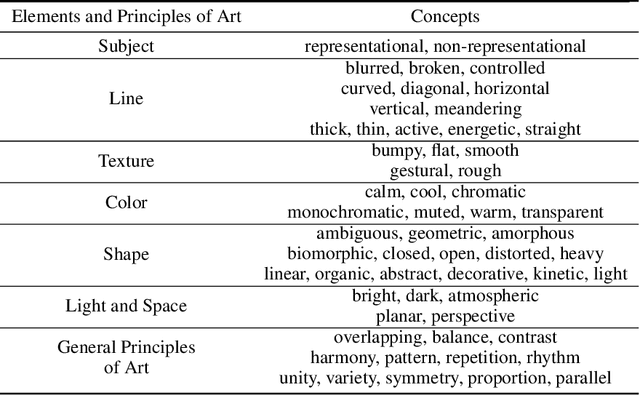
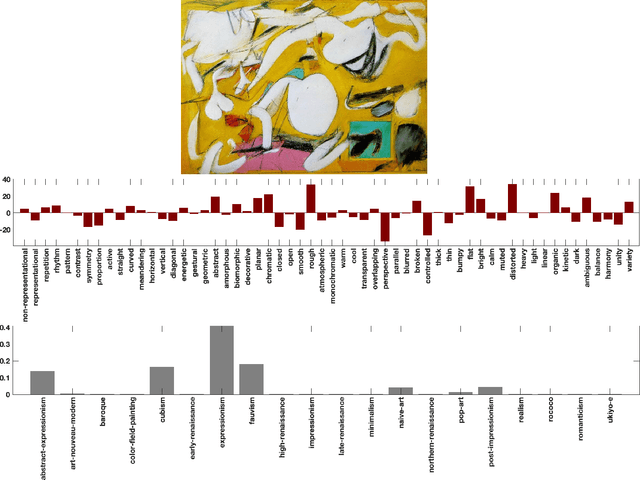
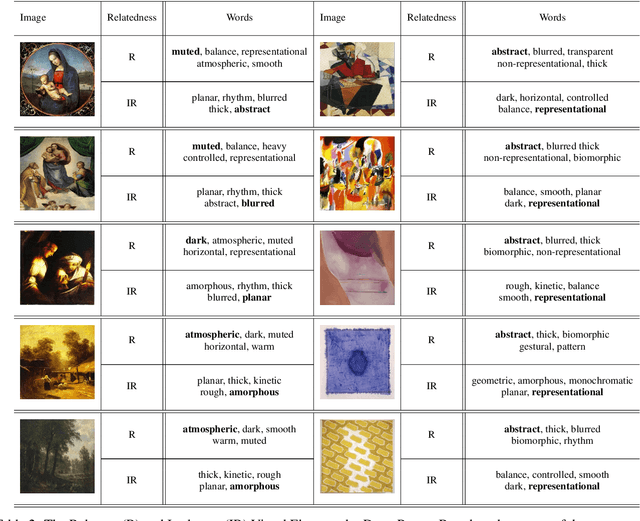
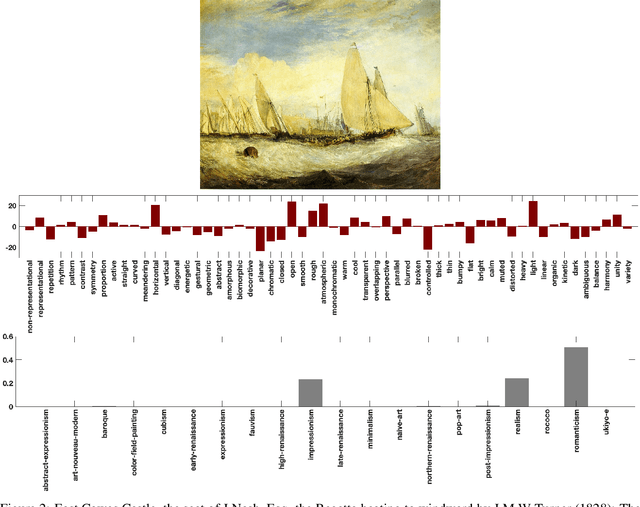
Abstract:We present a machine learning system that can quantify fine art paintings with a set of visual elements and principles of art. This formal analysis is fundamental for understanding art, but developing such a system is challenging. Paintings have high visual complexities, but it is also difficult to collect enough training data with direct labels. To resolve these practical limitations, we introduce a novel mechanism, called proxy learning, which learns visual concepts in paintings though their general relation to styles. This framework does not require any visual annotation, but only uses style labels and a general relationship between visual concepts and style. In this paper, we propose a novel proxy model and reformulate four pre-existing methods in the context of proxy learning. Through quantitative and qualitative comparison, we evaluate these methods and compare their effectiveness in quantifying the artistic visual concepts, where the general relationship is estimated by language models; GloVe or BERT. The language modeling is a practical and scalable solution requiring no labeling, but it is inevitably imperfect. We demonstrate how the new proxy model is robust to the imperfection, while the other models are sensitively affected by it.
The Shape of Art History in the Eyes of the Machine
Feb 12, 2018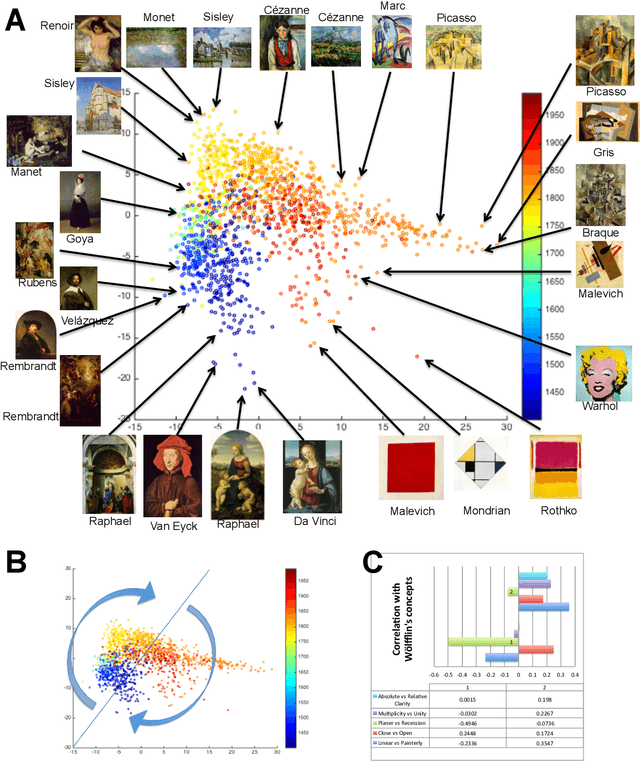
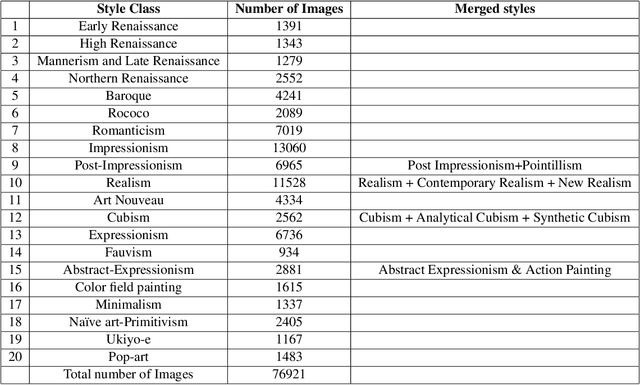


Abstract:How does the machine classify styles in art? And how does it relate to art historians' methods for analyzing style? Several studies have shown the ability of the machine to learn and predict style categories, such as Renaissance, Baroque, Impressionism, etc., from images of paintings. This implies that the machine can learn an internal representation encoding discriminative features through its visual analysis. However, such a representation is not necessarily interpretable. We conducted a comprehensive study of several of the state-of-the-art convolutional neural networks applied to the task of style classification on 77K images of paintings, and analyzed the learned representation through correlation analysis with concepts derived from art history. Surprisingly, the networks could place the works of art in a smooth temporal arrangement mainly based on learning style labels, without any a priori knowledge of time of creation, the historical time and context of styles, or relations between styles. The learned representations showed that there are few underlying factors that explain the visual variations of style in art. Some of these factors were found to correlate with style patterns suggested by Heinrich W\"olfflin (1846-1945). The learned representations also consistently highlighted certain artists as the extreme distinctive representative of their styles, which quantitatively confirms art historian observations.
CAN: Creative Adversarial Networks, Generating "Art" by Learning About Styles and Deviating from Style Norms
Jun 21, 2017



Abstract:We propose a new system for generating art. The system generates art by looking at art and learning about style; and becomes creative by increasing the arousal potential of the generated art by deviating from the learned styles. We build over Generative Adversarial Networks (GAN), which have shown the ability to learn to generate novel images simulating a given distribution. We argue that such networks are limited in their ability to generate creative products in their original design. We propose modifications to its objective to make it capable of generating creative art by maximizing deviation from established styles and minimizing deviation from art distribution. We conducted experiments to compare the response of human subjects to the generated art with their response to art created by artists. The results show that human subjects could not distinguish art generated by the proposed system from art generated by contemporary artists and shown in top art fairs. Human subjects even rated the generated images higher on various scales.
 Add to Chrome
Add to Chrome Add to Firefox
Add to Firefox Add to Edge
Add to Edge